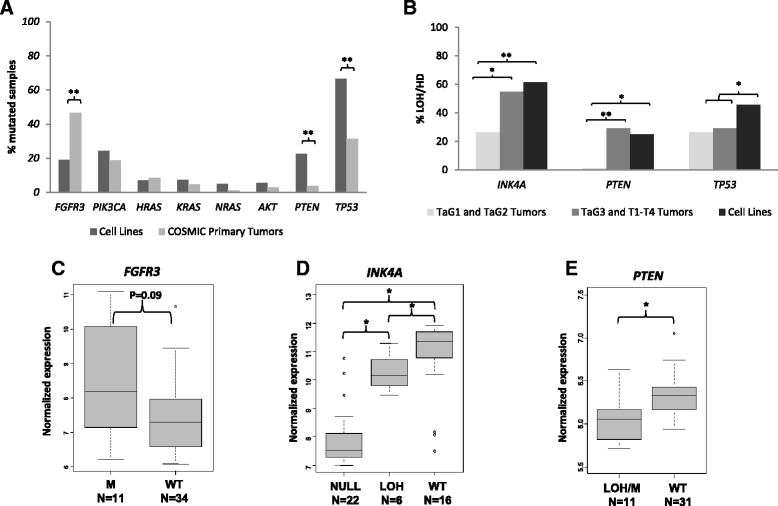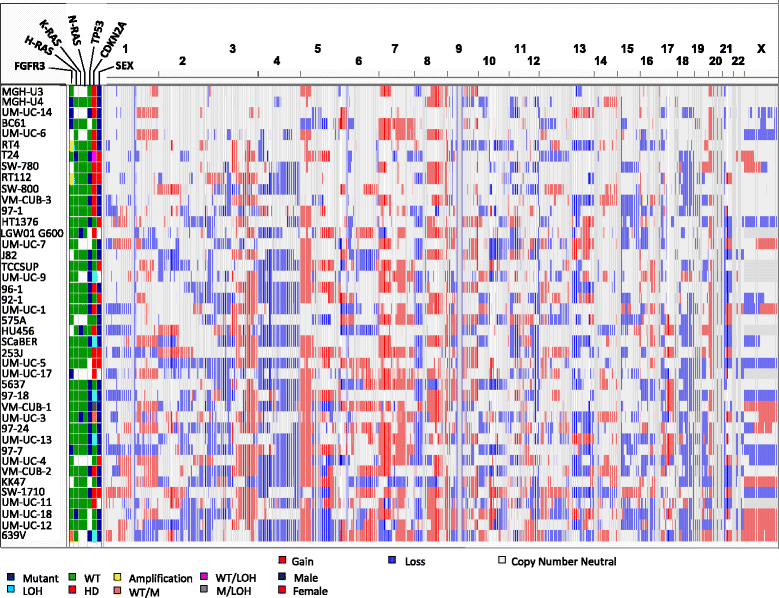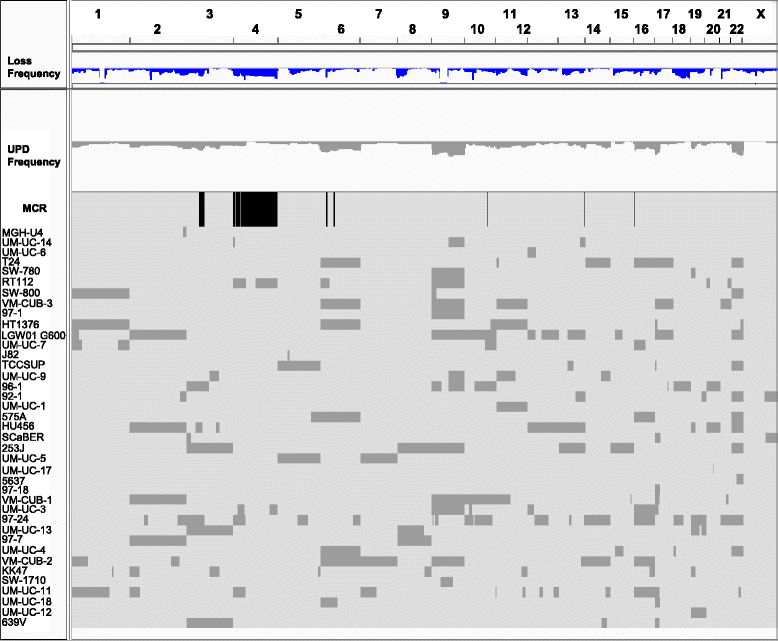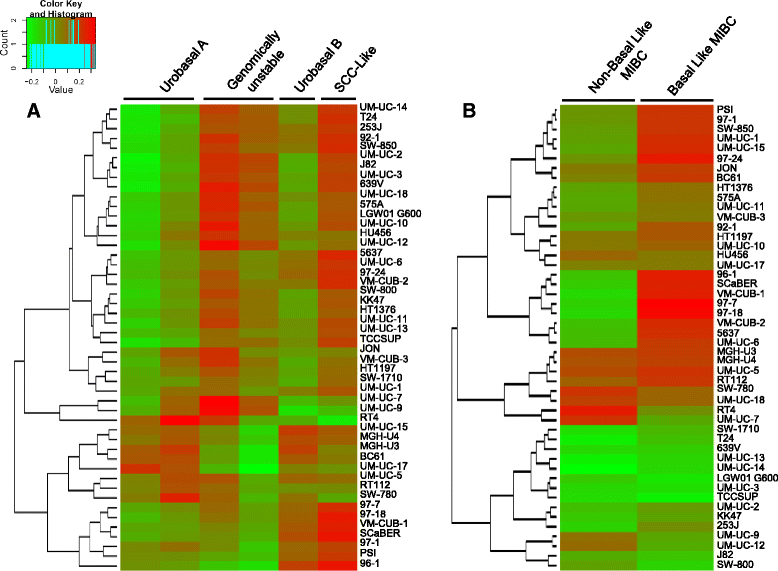The UBC-40 Urothelial Bladder Cancer cell line index: a genomic resource for functional studies
- PMID: 25997541
- PMCID: PMC4470036
- DOI: 10.1186/s12864-015-1450-3
The UBC-40 Urothelial Bladder Cancer cell line index: a genomic resource for functional studies
Erratum in
-
Erratum to: The UBC-40 Urothelial Bladder Cancer Cell Line Index: a genomic resource for functional studies.BMC Genomics. 2015 Nov 30;16(1):1019. doi: 10.1186/s12864-015-2227-4. BMC Genomics. 2015. PMID: 26621286 Free PMC article. No abstract available.
-
Erratum to: The UBC-40 Urothelial Bladder Cancer cell line index: a genomic resource for functional studies.BMC Genomics. 2016 Oct 25;17(1):829. doi: 10.1186/s12864-016-3179-z. BMC Genomics. 2016. PMID: 27782819 Free PMC article. No abstract available.
Abstract
Background: Urothelial bladder cancer is a highly heterogeneous disease. Cancer cell lines are useful tools for its study. This is a comprehensive genomic characterization of 40 urothelial bladder carcinoma (UBC) cell lines including information on origin, mutation status of genes implicated in bladder cancer (FGFR3, PIK3CA, TP53, and RAS), copy number alterations assessed using high density SNP arrays, uniparental disomy (UPD) events, and gene expression.
Results: Based on gene mutation patterns and genomic changes we identify lines representative of the FGFR3-driven tumor pathway and of the TP53/RB tumor suppressor-driven pathway. High-density array copy number analysis identified significant focal gains (1q32, 5p13.1-12, 7q11, and 7q33) and losses (i.e. 6p22.1) in regions altered in tumors but not previously described as affected in bladder cell lines. We also identify new evidence for frequent regions of UPD, often coinciding with regions reported to be lost in tumors. Previously undescribed chromosome X losses found in UBC lines also point to potential tumor suppressor genes. Cell lines representative of the FGFR3-driven pathway showed a lower number of UPD events.
Conclusions: Overall, there is a predominance of more aggressive tumor subtypes among the cell lines. We provide a cell line classification that establishes their relatedness to the major molecularly-defined bladder tumor subtypes. The compiled information should serve as a useful reference to the bladder cancer research community and should help to select cell lines appropriate for the functional analysis of bladder cancer genes, for example those being identified through massive parallel sequencing.
Figures






References
Publication types
MeSH terms
Substances
Grants and funding
LinkOut - more resources
Full Text Sources
Other Literature Sources
Medical
Molecular Biology Databases
Research Materials
Miscellaneous

